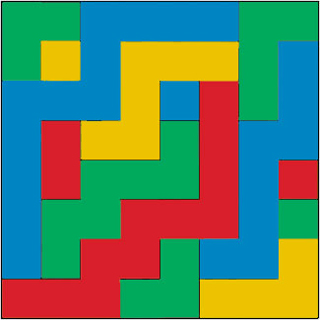
The total number of ways to cover an m x n chessboard (and many other nonrectangular boards as well, such as the Young diagram of a partition) with disjoint snakes is a product of Fibonacci numbers. (Image adapted from Homework 7 (PDF).)
Instructor(s)
Prof. Richard Stanley
MIT Course Number
18.S66
As Taught In
Spring 2003
Level
Undergraduate
Course Description
Course Features
Course Highlights
This undergraduate subject on "The Art of Counting" features a comprehensive set of 233 problems for students to solve. The course is structured with one lecture session per week, and student presentations to report on their work in one problem session per week.
Course Description
The subject of enumerative combinatorics deals with counting the number of elements of a finite set. For instance, the number of ways to write a positive integer n as a sum of positive integers, taking order into account, is 2n-1. We will be concerned primarily with bijective proofs, i.e., showing that two sets have the same number of elements by exhibiting a bijection (one-to-one correspondence) between them. This is a subject which requires little mathematical background to reach the frontiers of current research. Students will therefore have the opportunity to do original research. It might be necessary to limit enrollment.


